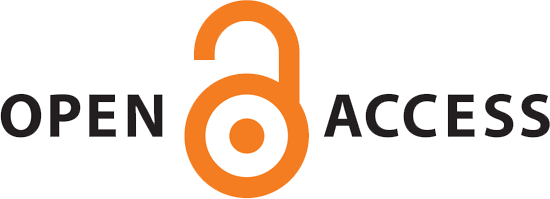2024 CiteScore: 3
pISSN: 1735-4587
eISSN: 2008-2215
Editor-in-Chief:
Mohammad Reza Mohammadi, MD.

This journal is a member of, and subscribes to the principles of, the Committee on Publication Ethics (COPE).

Articles in Press
Objective: Postpartum depression (PPD) has a significant impact on the mother, child and family. Pharmacologic therapy in breastfeeding mothers often causes side effects, so non-pharmacologic alternatives are needed. This study aims to systematically review and synthesize evidence from randomized controlled trials (RCTs) on the effectiveness of non-pharmacological interventions for PPD through a network meta-analysis.
Method: This network meta-analysis synthesizes evidence from RCTs evaluating non-pharmacological interventions for PPD. We reviewed 13 articles from PubMed, Science Direct, Scopus, and Cochrane Library. Network Meta-Analysis was performed using RStudio with a random effects model, while Rob 2.0, RoB-ME, and CINeMA were used to assess the risk of bias.
Results: The analysis showed that Therapy-Assisted Internet Cognitive Behavioral Therapy (TA-iCBT) had the highest benefit with a Mean Difference (MD) of 6.90 [95% CI 5.35 to 8.45], p = 0.005, as well as the highest effectiveness (P-score 0.891) and very low heterogeneity (I² = 0%). Qualitatively, other alternative therapies are also safe for the mother, but need to be tailored to the patient's needs.
Conclusion: In conclusion, TA-iCBT is the most effective non-pharmacological therapy for PPD and can be the main choice in the psychiatric treatment of PPD patients.
Objective: Autism spectrum disorder (ASD) is a neurodevelopmental disorder characterized by social communication impairments, restricted interests, and repetitive behaviors. The etiology of ASD is complex, involving genetic and environmental factors. The HECT (Homologous to the E6-AP Carboxyl Terminus) family protein E6-associated protein (E6-AP), encoded by the UBE3A gene, is an ubiquitin ligase implicated in neurological disorders, including Angelman syndrome (AS) and potentially ASD. Dysregulation of E6-AP, influenced by environmental factors such as human papillomavirus (HPV) E6 protein, may contribute to neurodevelopmental abnormalities.
Method: This review synthesizes current literature to explore the potential link between HPV E6 protein and E6-AP dysfunction in the context of ASD. We analyzed 32 peer-reviewed studies, including 12 original research articles, 10 reviews, and 10 meta-analyses, retrieved from PubMed and Google Scholar, focusing on E6-AP’s roles in ubiquitin-mediated signaling pathways, its dysregulation in neurodevelopmental disorders, and the impact of HPV E6 on E6-AP function.
Results: E6-AP is critical in regulating signaling pathways associated with tumorigenesis and neurodevelopment. Dysregulation of E6-AP, potentially induced by HPV E6, has been implicated in AS and, to a lesser extent, ASD. As visually demonstrated in Figure 1, these complex relationships between HPV, neurodevelopmental disorders, and E6 protein underscore the need for cross-disciplinary research. Current findings indicate that HPV E6 may disrupt E6-AP’s ubiquitin ligase activity, potentially contributing to neurodevelopmental impairments observed in ASD.
Conclusion: The potential link between HPV E6 and E6-AP dysfunction underscores a novel avenue for understanding environmental contributors to ASD. Given the complexity of ASD, further research is essential to elucidate E6-AP’s role and to develop targeted therapeutic strategies. This review highlights the need for studies investigating HPV-related mechanisms in ASD to advance effective interventions and support systems.
Objective: Mild Cognitive Impairment (MCI) is a transitional state between normal aging and dementia, with high risk of progression. Early detection is essential, and so the Montreal Cognitive Assessment (MoCA) has become a widely used screening tool. Despite its popularity, concerns remain about its psychometric limitations and cultural applicability.
This review aims to critically analyze the MoCA, focusing on the validity and limitations of its subtests, and to propose directions for refinement and clinical adaptation.
Method: We conducted a structured narrative review (2005–2024) using PubMed, Scopus, and Web of Science databases. Search terms included “Montreal Cognitive Assessment”, “MoCA”, “validity”, “psychometrics”, and “cultural adaptation”. Studies evaluating psychometric performance, cultural adaptations, and clinical applications of the MoCA were included. Case reports and studies lacking psychometric evaluation were excluded. An item-by-item critical appraisal was performed.
Results: The MoCA shows superior sensitivity for MCI detection compared to the Mini-Mental State Examination (MMSE), with strengths in brevity, multidomain coverage, and accessibility. However, limitations include: superficial executive function (EF) assessment, cultural and educational bias, lack of recognition/cueing in memory testing, simplistic binary scoring, and risk of floor/ceiling effects. These may affect diagnostic accuracy across populations.
Conclusion: The MoCA remains a valuable tool but should not be used in isolation. Clinicians must consider the cultural/educational context when interpreting results. Refinements such as weighted scoring, cued recall, and culturally adapted items, alongside digital versions, could improve accuracy and fairness. Further empirical validation of these modifications is needed.
-
-
2024 CiteScore: 3
pISSN: 1735-4587
eISSN: 2008-2215
Editor-in-Chief:
Mohammad Reza Mohammadi, MD.

This journal is a member of, and subscribes to the principles of, the Committee on Publication Ethics (COPE).


 |
All the work in this journal are licensed under a Creative Commons Attribution-NonCommercial 4.0 International License. |
